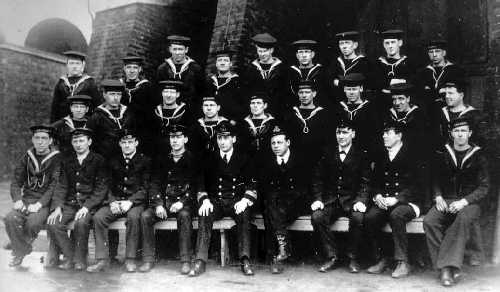- Author
- Smith, Peter
- Subjects
- Biographies and personal histories, History - WW1, WWI operations
- Tags
-
- RAN Ships
- None noted.
- Publication
- June 2006 edition of the Naval Historical Review (all rights reserved)
The following story is of an Australian Able Seaman whom some military historians believe should have been awarded the Victoria Cross for his courage and compassion while under enemy fire from Turkish guns in the Dardanelles during World War I. The most senior survivor was Petty Officer Coxswain Robert Perkins, DSM who wrote in a report, ‘Reuben Mitchell acted most gallantly. He was on the conning tower with three officers, passing orders below to the helmsman. All the officers were swept off the bridge by shellfire and he was left all alone. Although the enemy had the exact range and he was clearly visible, he stuck to his post and took charge of the boat until it sank. When in the water, he then rescued the wireless operator who was unconscious from head wounds. There was no senior officer left to recommend him for his outstanding gallantry, and his only reward was the self-evident fact that he had done his duty.’
Reuben Joseph Edward Mitchell was born in Ballarat, Victoria on 28 July, 1894. Having joined the Royal Navy based on the Australian Station, he served on several ships before joining HMS Challenger and sailing to England on the ship’s return in 1913. It was while at Portsmouth that he volunteered for submarines and on completion of his training at HMS Dolphin based on Fort Blockhouse, and at HMS Vernon, which included training in HM Submarines A6, A13 and E4, he joined HMAS AE2 to return to Australia as an Able Seaman.

Mitchell is second from the right in the top row
When AE2 was deployed to the Mediterranean, Mitchell found himself transferred to spare crew on a submarine repair ship when AE2 undertook her sortie up the Dardanelles in April, 1915.
On 27 January 1918, Able Seaman Mitchell was included in the crew of HMS E14 under the command of LCDR G.S. White, RN, when they set out to torpedo the German battle cruiser Goeben, which had been damaged by a mine and run aground off Nagara Point in the Dardanelles.
The source for most of this story was written by Mitchell himself in a report which was recently found in a file located in the Sampson Collection on Spectacle Island. It is reproduced here verbatim.
Mitchell’s own account
‘HM Submarine E14, Lieutenant Commander White, RN, left a naval base on the evening of 27 January with an escort as far as the entrance to the Dardanelles. At 3 am 28 January, we forced our way through the first line of nets without resistance. All went well until about 6 am, when we ran aground and were caught in the nets, which we could not clear, so we surfaced, and the Captain went out and cleared the obstacle. We believed it to be the nets, but the Captain did not say. Before going out, the Captain left orders for the Lieutenant to dive at once should he whistle or sing out, and to ‘look after himself as there were 31 men inside; never to mind him.’ While the Captain was on the surface, he found the gates of the Narrows, and that we were at Chanak. He did not hear a shout or anything and came inside the boat and went astern into deep water, and got away without being seen. These were the last nets we felt.
Now the search for the Goeben started and I believe we went on for two miles past Nagara Point and found the Goeben had gone. We found out during our capture that she was taken away six hours before, this we got from a Turkish naval man, who helped get her off. When the Captain found that she had gone, he went back for home, but at Chanak, there was a large German liner which we believed had ammunition for the Goeben.
We fired one torpedo at her and a heavy explosion took place. Our boat came to the surface and a heavy fire came from all the forts. Many pieces of shrapnel hit the boat, then a large shell hit the conning tower and did a bit of damage. The captain was pleased at the moment with the behaviour of the crew, not a man moving from his station. Several shells were then heard to pass overhead, but luckily they did not drop a depth charge.




